ART CITIES: Dubai-Michael Rakowitz
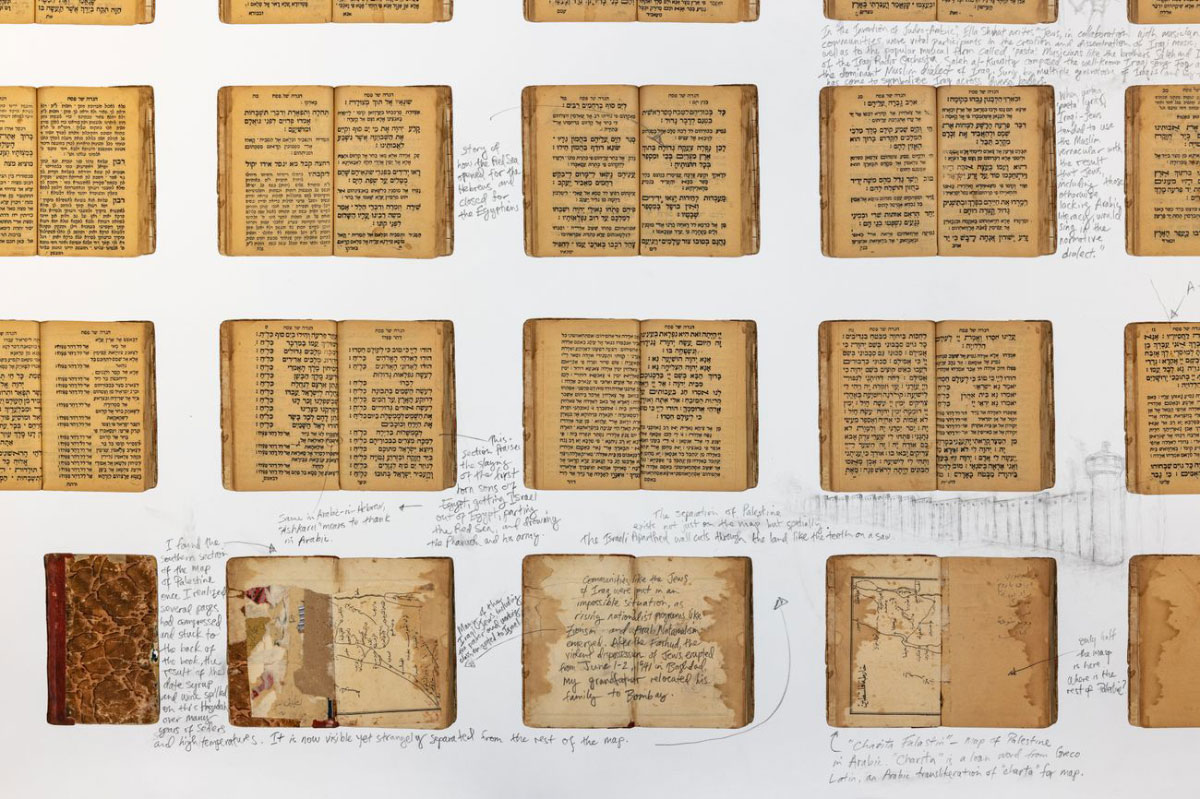 Concerned with history and current events, Michael Rakowitz uses his work to explore pressing issues and to invite others into the conversations fostered by his public projects, installations, and events. He engages in fact-finding and makes connections with people at all opportunities, focusing on individuals involved in situations that range from the personal to the local to the geopolitical. Among his first projects is “parasite” (begun 1997), a series of inflatable homes built in consultation with the homeless people who would occupy them.
Concerned with history and current events, Michael Rakowitz uses his work to explore pressing issues and to invite others into the conversations fostered by his public projects, installations, and events. He engages in fact-finding and makes connections with people at all opportunities, focusing on individuals involved in situations that range from the personal to the local to the geopolitical. Among his first projects is “parasite” (begun 1997), a series of inflatable homes built in consultation with the homeless people who would occupy them.
By Dimitris Lempesis
Photo: Green Art Gallery Archive
Michael Rakowitz solo exhibition “The invisible enemy should not exist (Northwest Palace of Kalhu, Room S, Western Entrance)”, is following his large-scale institutional exhibition at the Jameel Arts Centre in Dubai in 2020. “The invisible enemy should not exist” is an ongoing project centering on threatened, destroyed, and missing cultural heritage. Michael Rakowitz began this work in 2007, reappearing artifacts looted from the National Museum of Iraq in the aftermath of the US-led invasion in 2003. Drawing from a database of reference images and information, the sculptures are constructed using papier-mâché made of Arabic-English newspapers and West Asian food packaging found in diasporic grocery stores in Chicago. The invisible enemy should not exist is a translation of “Aj ibur shapu,” the name of the Processional Way that ran through Nebuchadnezzar’s Ishtar Gate in Babylon. Included in this exhibition is a series of cylinder seals. Existing on an intimate scale, cylinder seals were small stone objects that were rolled out onto wet clay to create an impression. They are linked to the invention of cuneiform writing on clay and were used as signatures, worn around the neck as jewelry, and served as amulets. Before the Iraq Museum’s looting, the collection of seals was over 15,000. In 2018, Rakowitz began a new branch of the project. Since the mid-1800s, Western institutions like the Louvre, the British Museum, and the Metropolitan Museum of Art have participated in the systematic extraction of works from the Assyrian Northwest Palace of Kalhu, (Nimrud), near present day Mosul, Iraq. The sculptural relief panels that remained after these waves of excavations were destroyed by ISIS in 2015. Using the same logic of the first iteration of “The invisible enemy should not exist”, Rakowitz and his studio have been reappearing the 200 remaining panels of the palace that were in situ until their destruction in 2015. Each room of “The invisible enemy should not exist (Northwest Palace of Kalhu)” is installed true to its original architectural footprint. As an integral part of each room’s installation, empty spaces with museum labels indicate where the panels that still exist are held, mostly in private collections or museums in the West. These empty spaces of imperialist extraction, alongside the reappeared panels that remained in the palace until their destruction in 2015, provide a view of what the palace would have looked like the day before its destruction by ISIS, and make present the human lives that perished alongside the destroyed archaeological sites. It is a project that acknowledges the continued history of displacement in Iraq, creating a palimpsest of different moments of removal. Premiering at Green Art Gallery is a section of “Room S from the Northwest Palace of Kalhu”. This room was a reception hall containing one of the most carefully constructed and well preserved reliefs depicting King Ashurnasirpal II, which was excavated by Austen Henry Layard in 1847 and sent immediately to the British Museum. The exhibition features the first group of reliefs in this ongoing series to include within the papier-maché collage fragments from old issues of Nineveh Magazine, quarterly publication in Modern Assyrian and English donated to Michael Rakowitz’s studio by the Assyrian Foundation of America. The exhibition also includes Rakowitz’s “Charita Baghdad”, a site-specific intervention in dialogue with Rigas Feraios’ Charta of Greece*. This ongoing work consists of an annotated 1936 Passover Haggadah belonging to the Baghdadi Jewish community in what is now modern day Iraq, from where the artist’s maternal family is from. Conceived in continuing conversation with Dr. Ella Habiba Shohat, a cultural theorist descended from a Baghdadi Jewish family, “Charita Baghdad” interrogates the linguistic confusion around the existence of “Judeo-Arabic.” While there exists a dialect one can say is specific to the departed Iraqi Jewish community, what emerges from the page-by-page reading of this prayer book is more complex, shedding the simplistic view that Judeo-Arabic was like a West Asian version of Yiddish, partitioned from Arabic. In fact, the book is written with liturgical Hebrew prayers, but with instructions and translation in Arabic-in- Hebrew letters. This illustrates how literacy (reading and writing Arabic) was not accessible to all at this time, and thus education came through the community hub that was the synagogue during this era. Arabic-in-Hebrew letters functioned simply as a transliteration of the lingua-franca of Baghdadi Arabic. At stake in this study is the contested identity of the Arab-Jew which is rejected by Jewish nationalist ideology. As Shohat writes in The Invention of Judeo-Arabic, “the inclusion of Judeo-Arabic in the ‘family of Jewish languages’, standing always already apart from its
* Rigas Feraios was a Greek writer, political thinker and revolutionary, active in the Modern Greek Enlightenment. On July 24, 1798 he and seven of his partners were strangled by the Turks in Belgrade. Their lifeless bodies were tossed into the Danube river. He was victim of the Balkan uprising against the Ottoman Empire and a pioneer of the Greek War of Independence. The Rigas Charta, one of Feraios’ most striking works of importance, was first published by Feraios himself in Vienna (1796-1797) on twelve folios, each measuring approximately 50x70cm, reproduced in 1,220 copies. Of these, only 15 copies are extant today. The Charta marks the first major revival of Greek cartography, with geography enriched by a communicational and political dimension. After all, Feraios’ historical ideology draws from the French Enlightenment principle that geography and history are tightly interlinked.
Photo: Michael Rakowitz, Charita Baghdad, 2020, Graphite on archival digital print, 1100 x 4570 cm, 433 1/16 x 1799 3/16 inches, © Michael Rakowitz, Courtesy the artist and Green Art Gallery. Photo: Anna Shtraus
Info: Green Art Gallery, Al Quoz 1, Street 8, Alserkal Avenue, Unit 28, Dubai, United Arab Emirates, Duration: 19/9-23/11/2022, Days & Hours: Mon-Sat 11:00-19:00, www.gagallery.com/
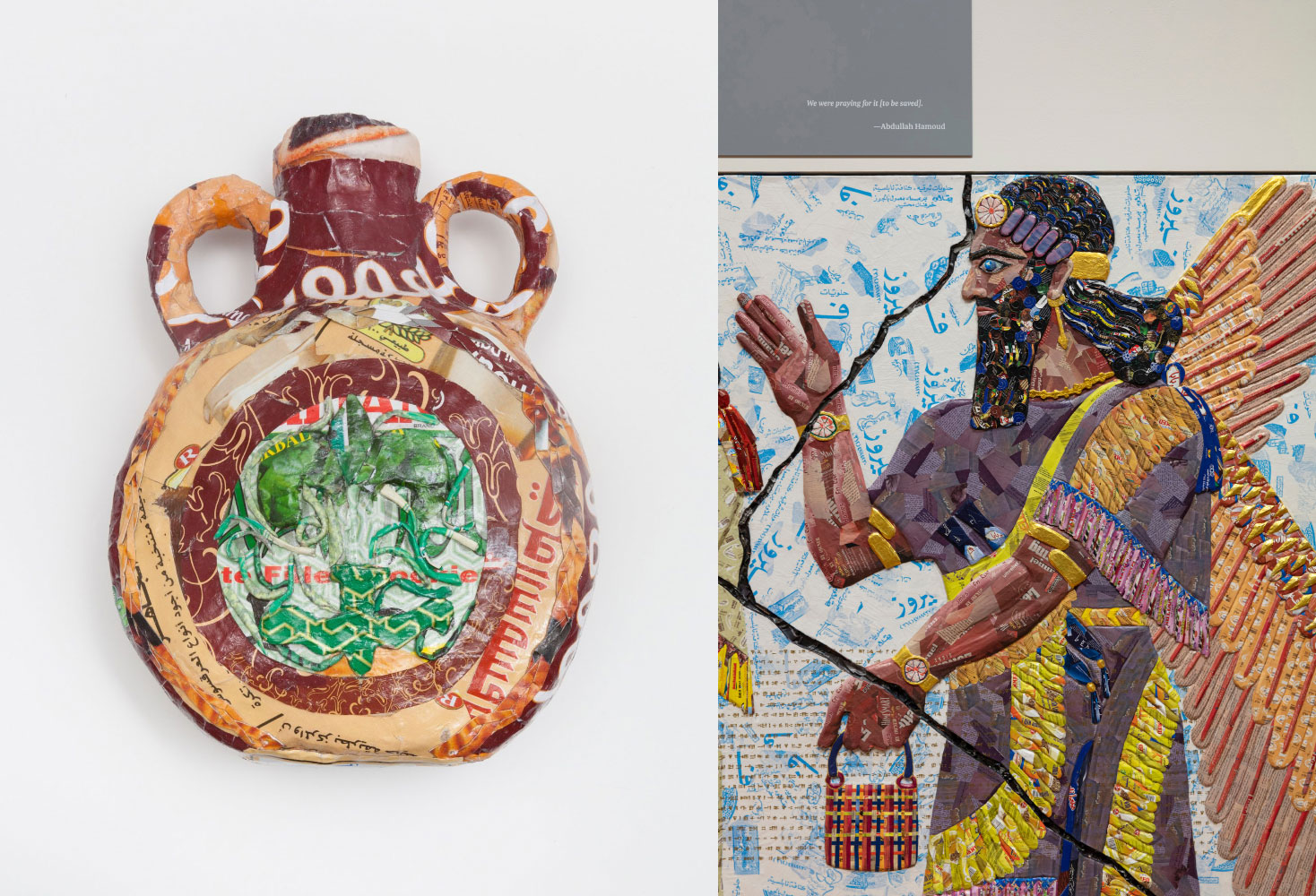
Right: Michael Rakowitz, The invisible enemy should not exist (Room H, Northwest Palace of Nimrud) (detail), 2018 ongoing, Arabic newspapers, food packaging, © Michael Rakowitz, Courtesy the artist and Green Art Gallery
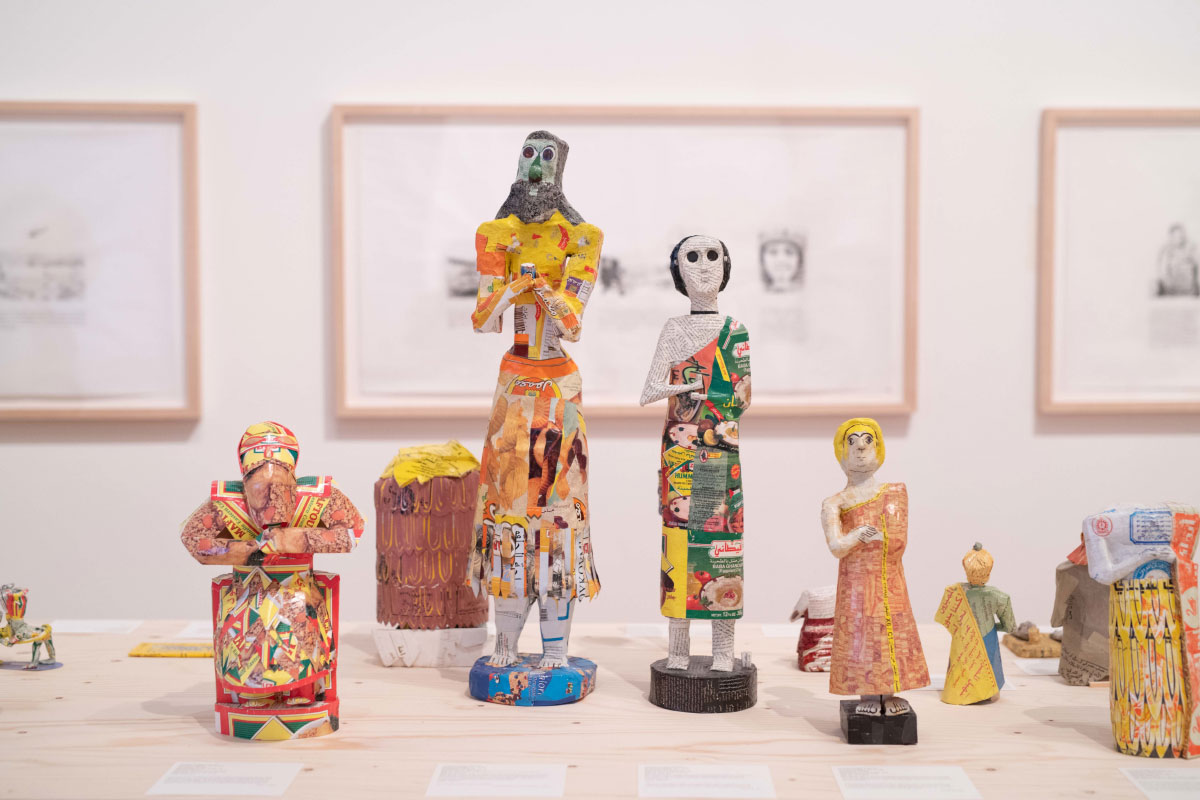

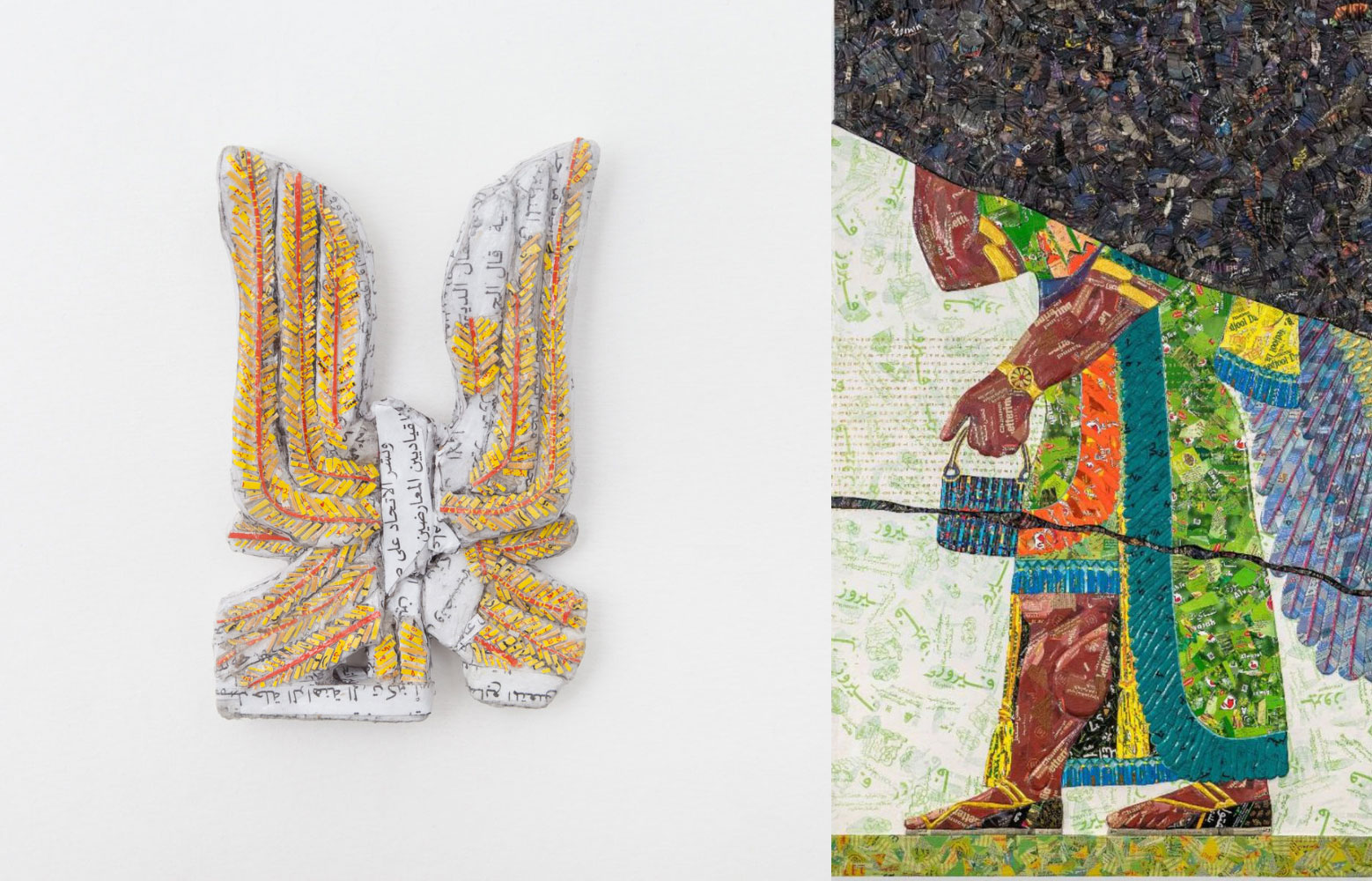
Right: Michael Rakowitz, The invisible enemy should not exist (Room H, Northwest Palace of Nimrud) (detail), 2018 ongoing , Arabic newspapers, food packaging, © Michael Rakowitz, Courtesy the artist and Green Art Gallery
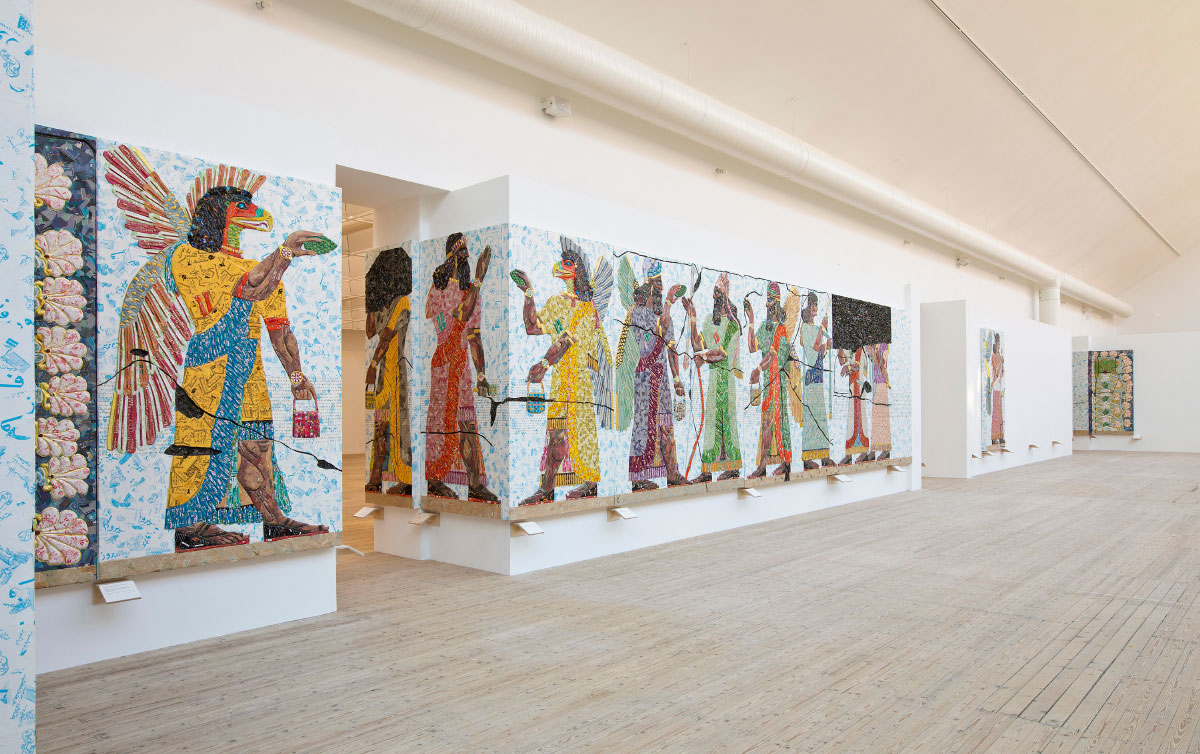
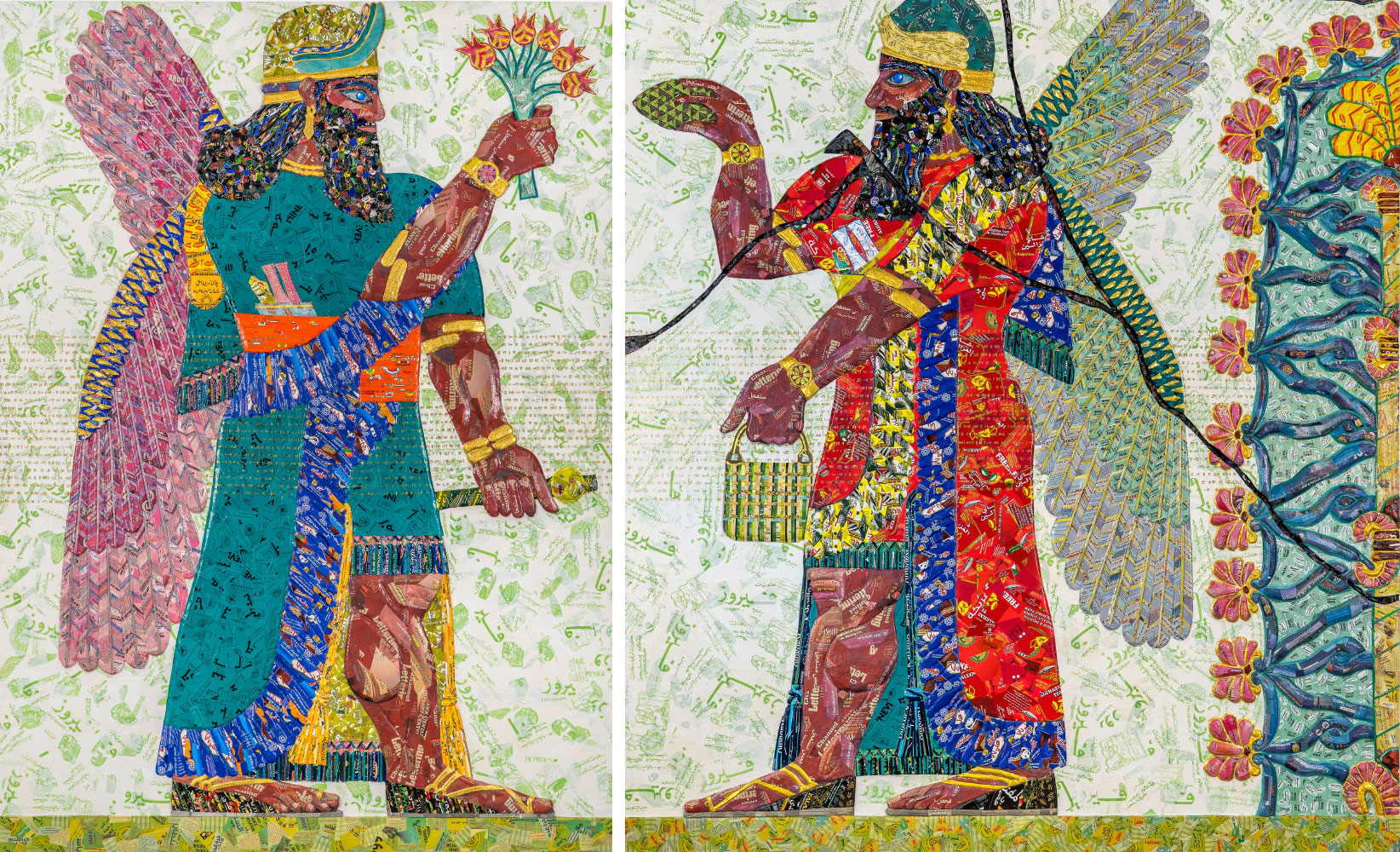
Right: Michael Rakowitz, The invisible enemy should not exist (Northwest Palace of Kalhu, Room S, Panel S-20), 2022, Arabic newspapers, food packaging, cardboard relief sculptures on wood panel, 224.79 x 203.2 x 10.16 cm, © Michael Rakowitz, Courtesy the artist and Green Art Gallery
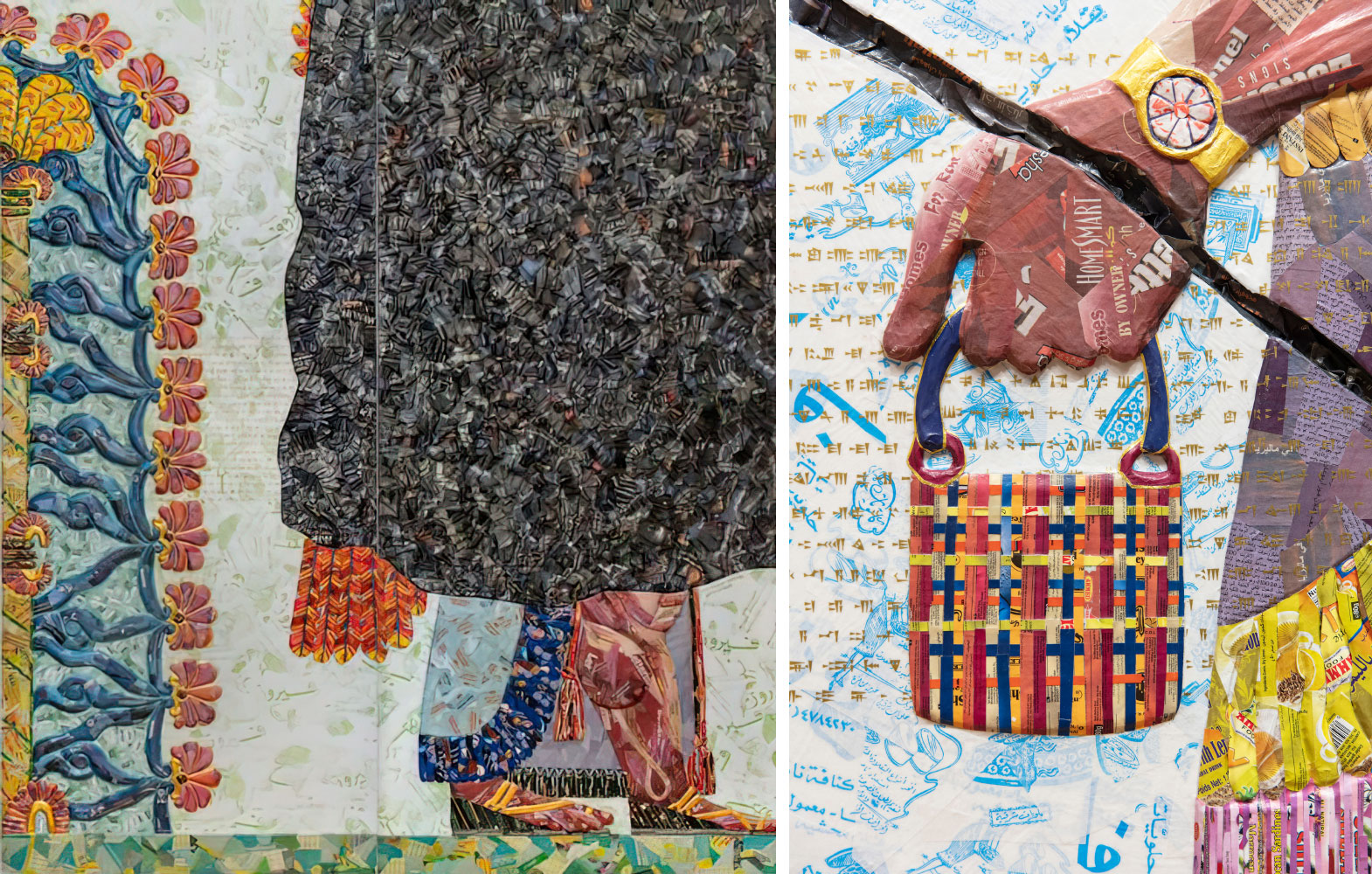
Right: Michael Rakowitz, The invisible enemy should not exist (Room H, Northwest Palace of Nimrud) (detail), 2018 Arabic newspapers, food packaging, and cardboard relief sculptures on wood panel, © Michael Rakowitz, Courtesy the artist and Green Art Gallery
